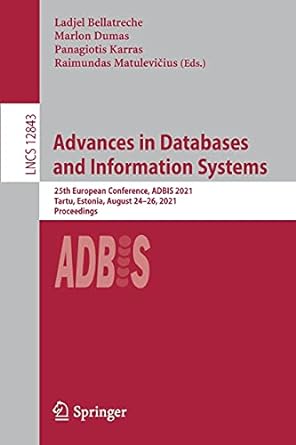Question
II. Hopefully, you are now in position to construct an inductive proof entirely on your own. Consider a formal language with a one-place operator *

II. Hopefully, you are now in position to construct an inductive proof entirely on your own.
Consider a formal language with a one-place operator * and a three-place operator # with the following syntax (or rules of sentence or formula formation).
(1) Any Atomic Proposition Letter is a well-formed formula (wff).
(2) If is a wff, then so too is *.
(3) If , , and are all wffs, then so too is #.
(4) Nothing else is a wff.
Using what we just did above in part I as a model,carefully construct an inductive
argument for the claim that any formula constructed according to this syntax must have an odd number of proposition letters. This is not as complex as what we just went through. However, be very explicit about how you are ordering formulas, what the base case is, what the inductive hypothesis is, and how it is used in the proof.
Thank you for helping.
PHIL 422 Advanced Logic Proof by Induction Exercise I. You might already be familiar with procedures for "driving" negations into the scopes of other functors through successive applications of DeMorgan's rule. Consider then the following claim, which can be established through logical induction: Any formula is equivalent to one in which all negations (if any) range overjust single proposition letters (that is, one in which all the negations have been "driven" inside of any parentheses) 1. To prove this claim by induction, we need to begin by identifying an appropriate means of ordering all of the well-formed formulas. What ordering should we use? 2. From that ordering, we begin our inductive proof with a base case. What is this base case? And why is the proof of the overall claim for the base case trivial? 3. We then proceed to the inductive step. So now let's consider an arbitrary formula x. We then need to have an inductive hypothesis. In this example, what would the inductive hypothesis be? 4. In the (inductive) case, the demonstration that our arbitrary formula x must obey our initial claim proceeds by cases corresponding to 's major operator. Supposing is a conjunction--( & )--how does the inductive hypothesis apply? PHIL 422 Advanced Logic Proof by Induction Exercise I. You might already be familiar with procedures for "driving" negations into the scopes of other functors through successive applications of DeMorgan's rule. Consider then the following claim, which can be established through logical induction: Any formula is equivalent to one in which all negations (if any) range overjust single proposition letters (that is, one in which all the negations have been "driven" inside of any parentheses) 1. To prove this claim by induction, we need to begin by identifying an appropriate means of ordering all of the well-formed formulas. What ordering should we use? 2. From that ordering, we begin our inductive proof with a base case. What is this base case? And why is the proof of the overall claim for the base case trivial? 3. We then proceed to the inductive step. So now let's consider an arbitrary formula x. We then need to have an inductive hypothesis. In this example, what would the inductive hypothesis be? 4. In the (inductive) case, the demonstration that our arbitrary formula x must obey our initial claim proceeds by cases corresponding to 's major operator. Supposing is a conjunction--( & )--how does the inductive hypothesis applyStep by Step Solution
There are 3 Steps involved in it
Step: 1

Get Instant Access to Expert-Tailored Solutions
See step-by-step solutions with expert insights and AI powered tools for academic success
Step: 2

Step: 3

Ace Your Homework with AI
Get the answers you need in no time with our AI-driven, step-by-step assistance
Get Started


